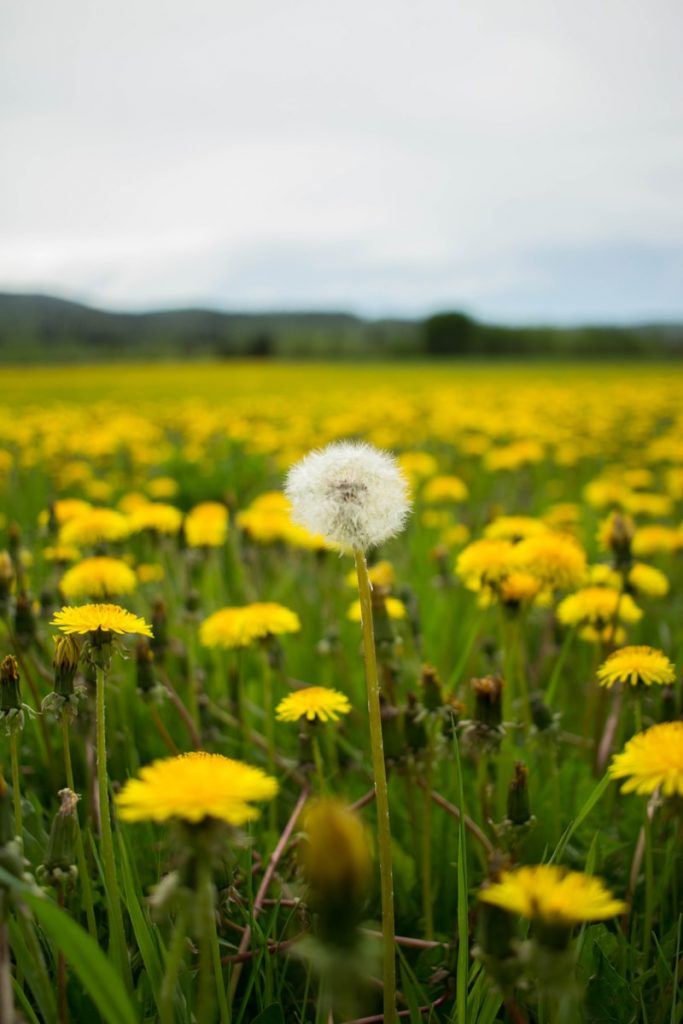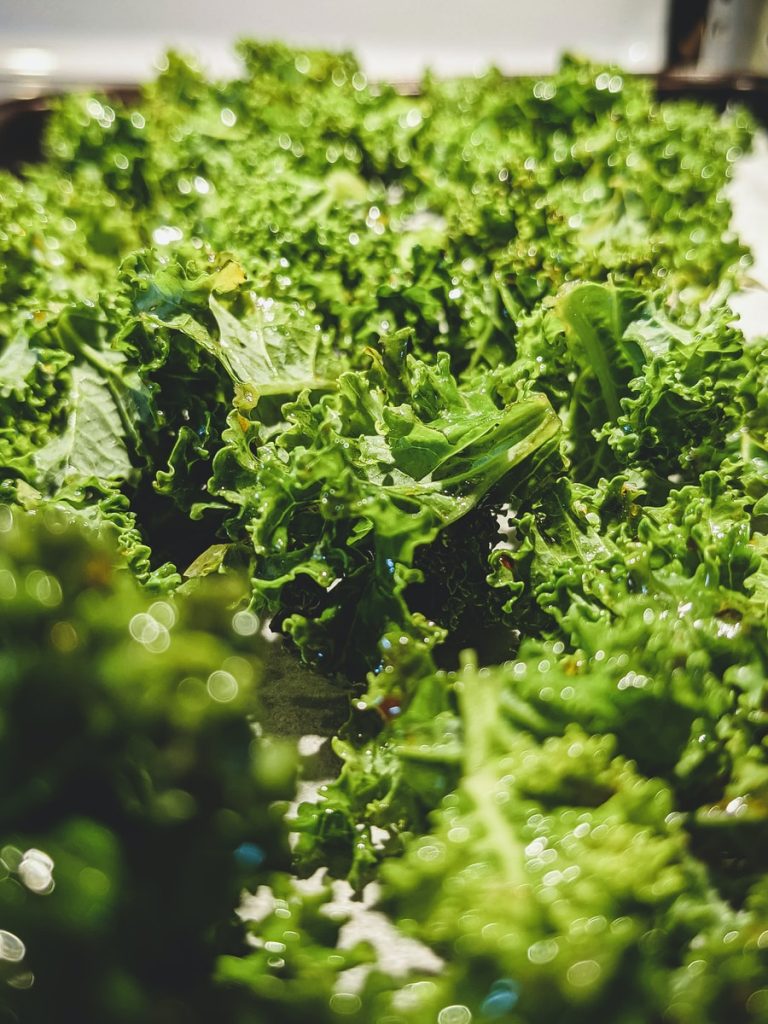When scouting for Dandelion, keep an eye out for these Dandelion lookalikes. There’s Wild Lettuce, Hawkbit, and various Cat’s Ears species, for example. It’s critical to know what plants you’re foraging for and what the differences are between Dandelion and Wild Lettuce. Let’s compare and contrast Wild Lettuce with Dandelion.

Dandelion
It is a perennial plant with bright green leaves that can grow up to 30cm in length. The name “Dandelion” is derived from the French word “dent de lion,” which means “lion’s tooth.” This name relates to the ‘teeth’ on the leaves of Dandelions. They don’t have sharp edges, but they do have depressed jagged edges.
Dandelion Eating for Humans and Animals
Dandelions are a vital source of nourishment for both people and animals. Many birds love dandelion seeds, and pigs and goats will cheerfully eat them. However, sheep and cattle, as well as horses, may not appreciate it. Rabbits, on the other hand, adore Dandelion, and it’s worth growing for them. Salads and liquids can contain young leaves (mature leaves are bitter). Dandelion can be used as a lettuce substitute in sandwiches, stews, curries, and stir-fries. Seeds from dandelion plants can be used in the same way. Young leaves have a similar flavor to endive or spinach and can be prepared similarly.
Dandelions are one of the superfoods of foraging because of their high vitamin, mineral, and protein content, as well as the numerous ways in which they can be used. However, these nutrients come at a price, namely the plant’s bitter solid flavor. Several approaches can be used to alleviate the bitterness. First, to extract the bitter components from the leaves, boil them in numerous changes of water. This will eliminate a tiny number of nutrients, and the resulting leaves will be unattractive.
Dandelion beer is a fermented beverage that is popular in many parts of the United States and Canada. The blooms of the Dandelion are used to make wine. In addition, dandelion roots are roasted as a coffee substitute. Dandelion-root tea called ‘Dandy Chai’ is one of my favorites. Dandelion coffee is caffeine-free and offers numerous health advantages, including supporting liver, kidney, and intestinal health.
· Identifying Characteristics of Dandelion:
· Each stalk has one bloom.
· Leaves with jagged, pointy edges
· hollow stems
· There are no hairs.
· Flowers all year, but especially in May and June.
“Where are dandelions not found?” might be a better question.
Dandelions and allied species thrive on lawns, gardens, roadsides, trail edges, and woodlands and are not opposed to growing between pavement cracks. They are commonly found popping up when nothing else will because they are early successional plants. And, like deer, mice, and raccoons, they flourish in the nooks and crannies that humans have made. Despite its origins in Eurasia, the common Dandelion has spread across the globe to nearly every climate, environment, and landscape capable of supporting plant life.
Why Should You Eat Dandelions?
Dandelions are one of the most valuable — and, until recently in history, adored — edible wild plants available to us. Greens are a “tonifying” agent for the liver when they first appear in early spring, assisting the internal organs in adjusting to the changing seasons. In addition, the root can be used to make a nutritious tea that is beneficial to the digestive system. As a result, some people think of dandelion root as a coffee substitute. Still, it misrepresents its actual worth as a therapeutic kitchen staple: coffee stimulates the digestive system, so dandelion root soothes it.

Wild lettuce
It is a biennial plant that grows up to 6 feet tall in two years. Virosa means “uncomfortably strong taste or scent” or “toxic,” and “Lactuca” means “milky extract” in Latin. By now, I’m sure this plant sounds quite appealing: poisonous milky extract with a disagreeable taste or odor. Wild lettuce has a smooth, pale green stem with a brown tap root. Purple dots appear on this stem from time to time. The bottom sections of the plant have prickles. The rough margins of the large, round leaves. Blossoms of wild lettuce resemble those of dandelion flowers. Although all lettuces possess some of these narcotic characteristics to some degree, it’s most recognized for its somewhat narcotic and pain-relieving properties.
Applications and drawbacks of wild lettuce
wid lettuce extract have specific applications: it used for whooping cough, cough, asthma, urinary tract problems, trouble in sleeping (insomnia), restlessness, muscular or joint pains, excitability in children, painful menstrual periods, excessive sex drive in women (nymphomania), poor circulation, swollen genitals in men (priapism), and as an opium substitute in cough preparations.
Wild lettuce extract also has disadvantages for most people in small amounts. It is not scientifically proven, but Wild lettuce is Likely unsafe when eaten in large amounts or when the wild lettuce has been harvested too early. This can cause sweating, fast heartbeat, pupil dilation, dizziness, ringing sound in the ears, blurred vision, sedation, breathing difficulty, and death. In addition, applying wild lettuce directly to the skin can irritate.
To improve overall lettuce production, there are four techniques –
· Plant lettuce seeds in raised beds to increase yield. The raised beds heat considerably more quickly than the ground around them. In the spring, you should be able to get a head start, and in the fall, you should be able to harvest later.
· Plant lettuce around taller plants like broccoli, Brussels sprouts, peppers, and eggplants to make the most of limited garden space. The lettuce aids its neighbor by keeping the soil moist and cold and shading away weeds. As the plants grow higher, they provide much-needed shade for the lettuce as the days grow hotter.
· You can also plant lettuce seedlings indoors in late spring and early fall to fill in gaps in the garden as other crops are harvested.
· Many varieties of lettuce are welcome additions to ornamental beds. For example, ‘Mighty Red Oak,’ ‘Sweet Red,’ and ‘Sierra Blush’ can quickly fill gaps in flowerbeds, adding splashes of red where needed.
Active Ingredients in Wild Lettuce
· Sesquiterpene lactones – Lactucin, lactucopicrin
· Lactucarium
· Lactucerols
· Lactucerin
· Lactucic acid
· Flavonoids
· N-methyl-B-phenethylamine
· Coumarins
· Beta-carotene
· Vitamins A and C
· Calcium
· Magnesium
Selection, Preparation, and Storage
In the United States, wild lettuce is most typically sold as a nutritional supplement, most commonly in capsule form and in tinctures, extracts, powders, and dried herbs. There are no recommendations for how much wild lettuce to eat, although manufacturers of capsule forms often recommend 400 to 500 mg per day. The concentration of the solution affects the dosage of tinctures and extracts. Tea can be made using dried herbal and powdered formulations by steeping 1 to 2 tablespoons of dried herb or 1 to 2 teaspoons of powder in a cup of hot water. When working with dried Lactuca virosa, exercise caution because you cannot manage the dose and may take more than you think.
Furthermore, there is no way of knowing whether the dried herbs have been contaminated with pesticides, heavy metals, chemical fertilizers, or other potentially dangerous elements. On the other hand, wild lettuce capsules provide more consistent dosing, especially if they’ve been certified by an independent certifying authority such as the United States Pharmacopeia (USP), ConsumerLab, or NSF International. Many herbal supplements are not certified, despite this. As supplement consumers become more knowledgeable, manufacturers are increasingly adopting the technique.
